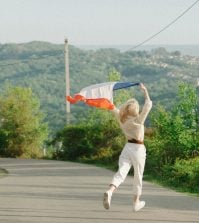Gender imbalance remains in Nepalese civil service recruitment

The Nepalese civil service has seen its proportion of women rise from eight per cent a decade ago to 23% last year, new figures reveal – though clear evidence of gender discrimination remains.
In 2008-9, just 32,457 women applied for civil service jobs through the national examination system, but in 2017-18 that figure reached 296,704, according to the annual report of the Public Service Commission (PSC). Women now comprise 20,334 of the 87,753-strong workforce.
Progress, but not equality
However, men are still recommended for recruitment more often than women. Although the 271,149 men applying for roles via the exams last year represented 48% of the total, some 68% of those recommended for roles were men – with 5253 men and 2465 women receiving a job offer.
Recent years have seen a steady rise in female applicants, according to national newspaper the Kathmandu Post, following a 2007 amendment to the Civil Service Act. This reserved 45% of civil service jobs for women, those from indigenous communities, the Madhesi and Dalit castes, and disabled people.
“When I entered civil services 16 years ago, there was no reservation, and we were not confident about whether we could pass the exam since there was fierce competition,” Anita Niraula, undersecretary at the Ministry of Federal Affairs and General Administration, told the Post. “Now, women are confident of securing civil service job with some extra effort.”
Cultural barriers
Ministry of Culture, Tourism and Civil Aviation joint secretary Nita Pokharel Aryal told the Post that women still face plenty of barriers, due to their predefined family roles as daughter, mother or daughter-in-law. “They have to spend more time fulfilling social obligations, which affects their preparation for exams compared to men who can simply focus on their tests,” she said.
The PSC data also revealed that two of the country’s dominant castes continue to enjoy greater success in recruitment processes, despite the quota reserving a proportion of jobs for those from more disadvantaged castes. Brahmins and Chhetris constituted more than 50% of candidates recommended for jobs last year, despite representing around 29% of the Nepalese population.
Indigenous rights activists say that the representation of ethnic groups in the civil service has risen since the quota was adopted, but that this policy needs to develop as numbers are not in proportion to their representation in the population.





















